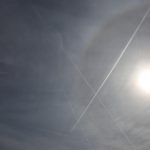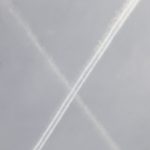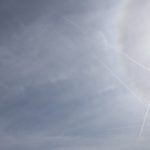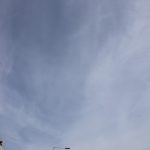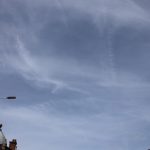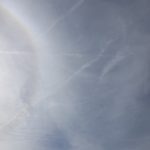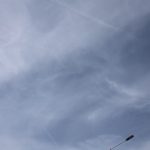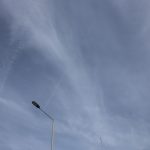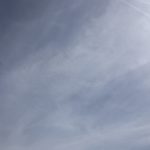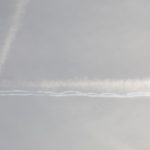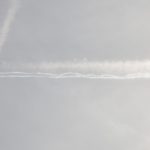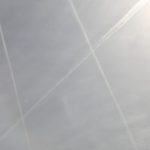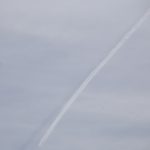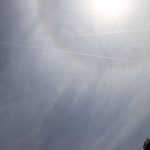If it were natural it would be illegal
Just a quickie to poke the deniers and remind them of the fact that if the massive amounts of emissions we see filling our skies and blocking our sunshine were natural, it would be illegal. The authorities would not stand for their sunshine being blocked, and anyhow, why bother having such stringent aviation emissions regulations when they are clearly being ignored.
Certainly what we see does not correlate to what we are being told by Rolls Royce, who say their engines are super efficient – more than 70% cleaner than in the 1950s when we would see noticeable soot coming from the engines. This never used to happen, so how can we have 70% more efficient engines and thousands of times more emissions. A Rolls Royce engineer confirmed no visible emissions should be seen nowadays. Makes no sense. Something is going on, and if you can’t accept that then you really need to go to get some help.
Think about that as you marvel at the images below. All images from July 6th 2016, West London.
Rolls Royce Plc
Response to request for information on civil aviation engine emissions
We design, develop, manufacture and service integrated power solutions for use in the air, on land and at sea. Our engineering expertise helps deliver more efficient products for our customers, helping them to do more using less. Our vision is to create better power for a changing world by providing leading technology and highly efficient products in each of our chosen markets.
Since the first commercial jet engines were produced in the 1950s, our engineering expertise has helped to reduce aircraft fuel burn by 70 per cent and noise by 75 per cent. Many of our products are currently market leaders in terms of environmental performance, including for example the Trent XWB, which is the world’s most efficient large civil aero engine.
Our commitment is to improve continuously the environmental performance of our products and services, with particular focus on lowering fuel consumption, emissions and noise. Each year we invest over £1.2 billion in gross Research and Development, over two-thirds of which is dedicated to improving environmental performance.
Our Group environmental strategy focuses on three key areas:
Supporting customers by further reducing the environmental impact of our
products and services
Developing new technology and capability for future low emissions products
and services
Continually reducing the environmental impact of all our business activities
Each of our products is subject to stringent environmental legislation. In addition, we are committed to reaching the Flightpath 2050 targets set out by the Advisory
Council for Aviation Research and Innovation in Europe. These include developing
technologies and procedures to:
Reduce aircraft CO2 emissions by 75 per cent (per passenger kilometre)
Reduce noise by 65 per cent
Reduce oxides of nitrogen (NOx) by 90 per cent.
This is all relative to a typical new aircraft produced in 2000. The engine contribution to these goals is defined as to reduce CO2 by 30 per cent and the NOx certification by 75 per cent.
We do not share details of individual engine flight emissions performance. The reported emissions of each engine type can be accessed through the International
Civil Aviation Organisation (ICAO) Emissions Databank.
For more information on our approach see www.rolls-royce.com/sustainability
Rolls Royce emissions reponse-10-08-16
Further reading:


